DORNRÖSCHEN IS WAKING UP!
And the Union flag that she is flying is the European one, with quite a lot having gone on during her Covid-induced sleep
Yes, it does really feel like that we’ve all been asleep for a while, except that just a year has gone by, rather than a hundred, since this little virus problem started. It just seems longer! Sadly, most native English speakers are more than a little challenged when confronted with other languages, so I guess I should explain that Dornröschen is the name of the original German version of The Sleeping Beauty, also sometimes known as Briar Rose, which is the more literal translation. However, we Brits are likely to be ahead on the health and safety front, as that spindle on which the poor girl pricked her finger would almost certainly have been fitted with some sort of protective guard if she had been in the UK, thereby avoiding the entire castle being condemned to a century of slumber after she had drawn a little blood. But it would have led to a much less interesting story, whereas we can all do with a little magic in our lives from time to time, and perhaps especially now….
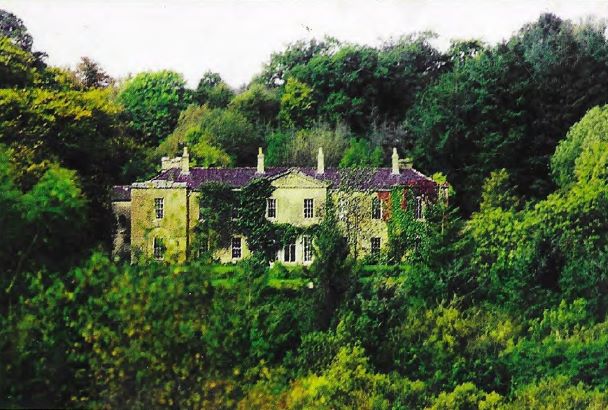
Of course the photo above isn’t of a German castle, but it does perhaps look as if the occupants have had a little “Dornröschenschlaf” of their own, which is why I put it here. It actually relates to my Irish ancestry, to which I’ll return at the end. But there is nevertheless a legitimate German theme to this particular bulletin, as we are in the process of opening an office in Heidelberg in order to facilitate continuing European sales after the UK’s self-inflicted idiocy of Brexit. That development will be the subject of more formal announcements in due course, but I thought that a little Vorspeise here would do no harm! We just want our continental friends to know that it’s going to be no more difficult to deal with us than it used to be before the lunatics took over the Westminster asylum, as it will be Cairn rather than yourselves who will be dealing with all the import/export hassles.
Heidelberg and our farm’s cherry orchard – two really cool places!
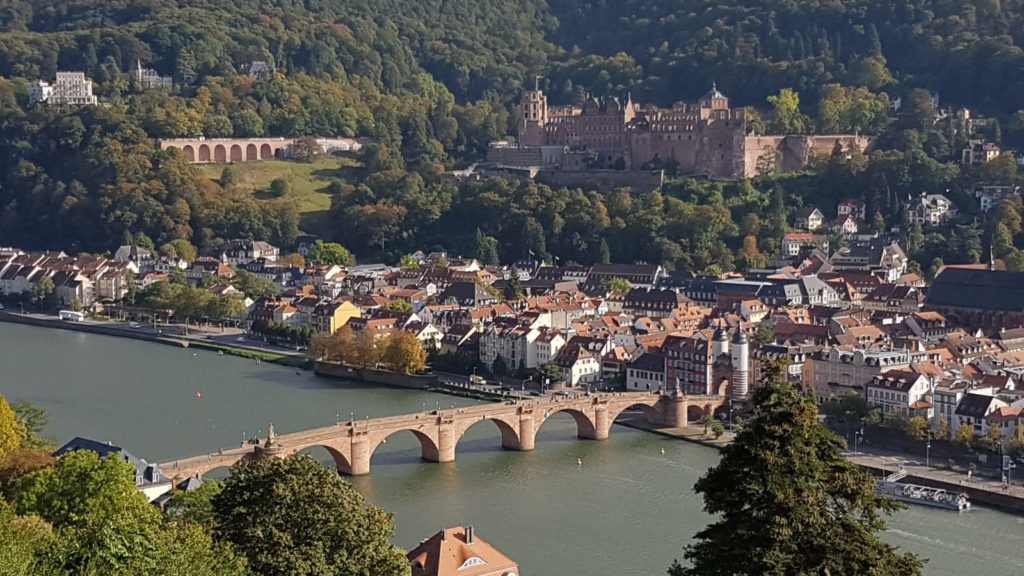
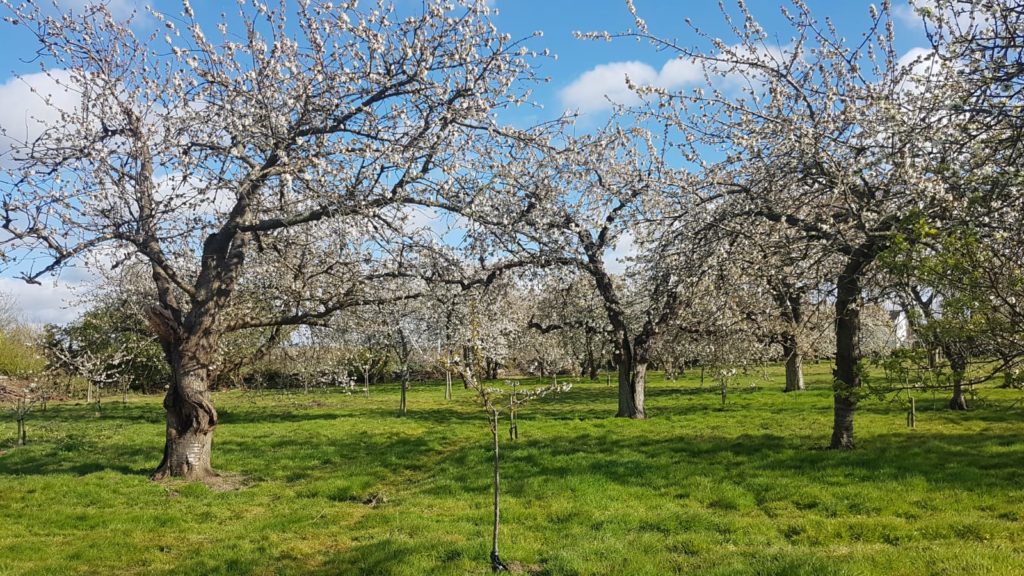
But we’ll still be basing most of our operations on our nice farm just outside Faversham in the UK, where the plants are also waking up after the winter, with lots of spring blossom currently in evidence in our cherry orchard as you can see. There are more people around now too, as those of us who have been furloughed or working from home are now steadily returning. And fortunately everyone has much to do, as business is particularly brisk right now!
However, in spite of our own little sleep, many things had been going on here over the last few months, but for various crazy reasons we’re not quite ready to talk about most of them yet! For example, there’s a new product that we’re currently selling as fast as we can make, so we are in no position to actively promote it right now. In fact I’ve had relatively little do do with that one (is there possibly a causal connection here?), as much of my own recent R&D time has been devoted to a couple of LED-related projects instead. However, since they haven’t quite reached the light of day, it would be premature to say much about those at this stage either!
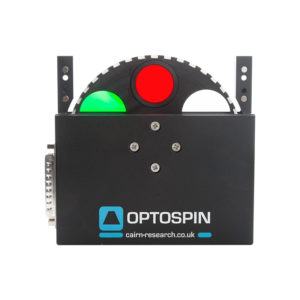
So what CAN I talk about? Well, there are still a few things with which I’ve been associated, although to be fair they were basically ready to go before this little problem with the virus cropped up. First, there’s the bigger version of the Optospin filter wheel, which takes 32mm rather than 25mm filters, although that’s already being fully promoted. The crazy thing here is that although the 25mm version took literally years to develop, everything we had learned there could be transferred directly to the 32mm version, which therefore worked as soon as we first switched it on! And another nice development is that we’re beginning to develop an OEM market for these products, as their combination of high-speed operation and compact size (no bulky motors in sight!) does seem to be pretty unique – and not to mention the various advantages of using the wheels in pairs, which our corporate propaganda explains here.
Related to this is our new “32mm” diaphragm. This is the latest version of our rectangular diaphragm, which opens up to a 23x23mm aperture, and hence to a maximum diagonal measurement of just over 32.5mm – just right for unity magnification onto some of the latest camera sensors such as the ones used in Andor’s Sona or Teledyne Photometrics’ Kinetix. We seem to redesign our diaphragm to open up a little further every decade or so, to match the corresponding increases in sensor size. As already mentioned elsewhere, our original design opened up to 10x10mm, but then we increased it to 16x16mm, before bringing out this latest version, which we managed to squeeze into the same overall 60mm body diameter as its predecessor.. That was a design target that I’d set myself as the primary diaphragm designer, which probably means I should get out more, but I’m afraid I also find such challenges to be kind of fun.
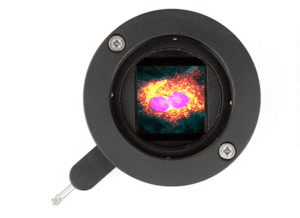
Although these are both new products, the requirement for supporting ever-larger fields of view has been clear to us for some years, so this has already been designed into our image splitter and camera relay products in particular. Hence they are all “32mm ready”. They all use “40mm” diameter optics, which gives a clear diameter of around 37mm, and are also custom multielement achromatic designs to give good performance over the entire field. We’ve also had a bigger version of our “Cairn cube”, that takes 32mm rather than 25mm diameter filters, on the books for quite a while, although we only now seem to be actively promoting it!
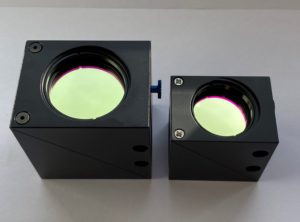
What we use to design all this nice stuff!
Now for a couple of quick commercials (sorry!). Cairn as “standard” uses the Solidedge mechanical CAD software, but I personally don’t like it very much, so for some years I’ve been using the rather less well-known package of ZW3D from ZWSoft for “my” Cairn designs such as the Optospins and the diaphragms. Amongst other issues, I prefer its rather less rodent-orientated user interface, and it’s also significantly cheaper. As an aside, which is also relevant to the second “advert”, commercial software seems to be becoming ever more expensive, which from our perspective opens up further opportunities, but that is also something that we’re not quite ready to talk about yet! But meanwhile, if truth be told, I’m almost certainly not as good at mechanical CAD as the other users here are, so accordingly it takes me rather longer to get things done. They then come along and convert my efforts to Solidedge in no time at all, so this mode of operation does perhaps make some strange sort of sense. Also in my designs I make all the different parts appear in different colours, to help me see how they all fit together (or not!), so the results do look rather like those nice Tonka toys, whereas by the time my CAD colleagues have sorted everything out, it’s all converted to a fully professional black. My CAD drawings do look a lot nicer though!
The second commercial relates to another of those things that we’re not quite ready to talk about yet, but it concerns optical design. For that we have been using the Zemax software for some years, and which seems to be pretty much the industry standard nowadays, but our version is now a little long in the tooth. The problem here is that it has become much more expensive since our last (practically decade old!) update, and is now only available on a rental basis of several thousand dollars a year. Yes we could afford to pay, but there is nevertheless a financial incentive to look elsewhere for the future! There are some well-known alternatives, such as OSLO or CodeV to name but two. However I never even got round to checking the prices for those, as instead I found a program by the name of OpTaliX from the German company Optenso, which you can buy outright for just 1600 euros. So I did.
Virtual Reality
A word of warning here. Compared with REAL optical designers such as this guy, I am still a very poor novice, but I have learned enough over the years to appreciate how much I don’t know, and hence to understand that ALL these optical “design” programs are optimisations rather than fundamental design tools. So using one program rather than another isn’t going to make you a better designer, any more than wearing flashier kit is going to make you a better footballer, so the real question is whether it’s easy and powerful enough to get the job done. And the Optenso product is crammed full of features I’d never dreamed of…. Just one of those is the ability to import and export Zemax files, which can be very handy if you want to check the performance of Thorlabs optical products, for example, as they often provide data in that format. And now that we have both packages, I seem to be spending most of my time on OpTaliX. I’m honestly puzzled why it isn’t better known, but I rest my case!
And now an apology. Well no, not really! In a previous blog I was particularly rude about the concept of the “webinar”, but in mitigation it was the name and the surrounding hype that I was objecting to. Let’s face it, in general all these Teams and Zoom meetings (whether business or social) have proved to be such a successful concept during the current little difficulties that they’re not going to suddenly go away again. And so it will be with the various forms of virtual scientific gatherings, and for which we have of course already offered to pay virtual money in order to demonstrate our strong support for the concept.
So, as already trailed in my last blog, we’ve been getting some decent audiovisual facilities together, in the second floor “loft space” of our new building. This space is particularly close to whatever passes for my own heart, as being the primary designer of the new building, I had to really “bang a few heads together” in order to ensure that it was going to be a sensibly useable space. Needing the joint involvement of architects, structural engineers and builders in order to comply with regulations, this turned out to be surprisingly difficult, but sometimes persistence is all!
This new facility is now pretty much ready for use, although the photo shown here does demonstrate a longstanding Cairn rule that every square inch of available desk or worktop space should be taken over by someone or other as soon as possible, in order to prevent anyone else from doing the same. However, we are nevertheless dreaming of clearing off enough of the clutter from time to time, to allow us to use this facility to make a vaguely professional-looking presentation or two in the near future.

And as I write this, the first major opportunity is almost upon us. This is for the 2021 electrophysiology and imaging spring school, which under more normal circumstances would be taking place in Paris, as it would previously have done so until the current little viral problems hit the fan last year. So this year it has joined the virtual crowd, but where I’ll be giving my talk on “light sources” as usual, and our CEO Jez will have a few things to say about camera technology.
And then there is “Plymouth”. about which I’ve written before, but which also had to be cancelled last year of course. Not normally taking place until September, for a while it looked as if it might occur for real again this year, but sadly that didn’t turn out to be possible, so Cairn’s appearance will also just have to be a virtual one this time. Plus there’s all those “support videos” that we’re dreaming of getting around to making before too long, so that new studio space should get a fair amount of use!
My Irish roots are still showing!
And yes, that is indeed an EU flag that you can see in the corner! While I try not to be too overtly political in these little diatribes (except when I actually am!), it seems to have become essential even for British opposition party politicians to have a Union flag (or preferably several) behind them when being interviewed in their own “studios”. This trend recently gave rise to a wonderful TV moment when an interviewer mocked his subject for showing a flag that “didn’t look big enough”, but still they all do it! So I reckon that’s a good enough excuse for us to nail our own colours to the mast, or at least to hang them from a microphone stand as we’ve done here. And when I’m on the air, perhaps I’ll be able to show the Irish tricolour as well, as and when their authorities agree for me to become one of their citizens, although for some strange reason there is currently still a considerable backlog of applications that need to be processed before it will be my turn.
Which brings me back to the opening photo, of that Irish country house (Killegar House) where my maternal grandmother and her siblings were brought up, as their father was the head gardener and steward there. What I don’t seem to have mentioned before is that her youngest brother has two still-living sons, one of whom (Kevin Morrow) is very interested in the family’s genealogy, and from whom I’ve found out a great deal. The other source arises from the property having been in continuous family ownership for the last couple of centuries, now being with Lady Sue Kilbracken, who was able to put me in touch with Kevin when I contacted her at the start of my ancestry searches last year..
I’m steadily finding out more all the time, most recently with Kevin sending me a pdf copy of a booklet about the property that you can see here, and from which that opening photo has been taken. Nowadays we all tend to think of property ownership as being a passport to riches, but if you own a great place like that, this doesn’t actually turn out to be true, as the booklet makes all too clear! Such places need a lot of expensive upkeep, so if this one looks like it has been asleep for the last century or so, then that is indeed the reason, but it’s still clearly a fantastic property. Of course my plans to see it for myself last year had to be put on hold, but perhaps later this year a visit will be possible?
Finally, all this brings me to an unexpected sad event last November, when my older Vizsla dog Vinnie died rather suddenly. It was all over in barely 24 hours, from what was obviously some sort of massive infection, but I’ll never know exactly what or why, as the vets failed to carry out the postmortem that I’d requested, having decided to cremate him first. So he’s currently waiting for some appropriate place in the garden, but at least I’ve still had his son Bertie with me meanwhile. But now I’m back up to two dogs again, as we’ve recently been joined by Bertie’s half-brother, in the form of new young pup Eddie. You can see them both in the photo below! And Vinnie was the son of my first dog Robi, so I seem to be building up a little ancestry tree here too.
Brothers and half-brothers!
Full brother Edmond is the one on the donkey!
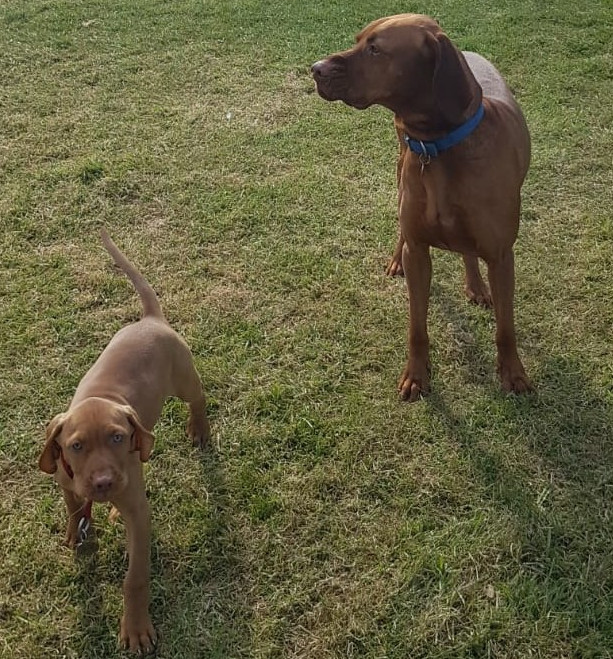
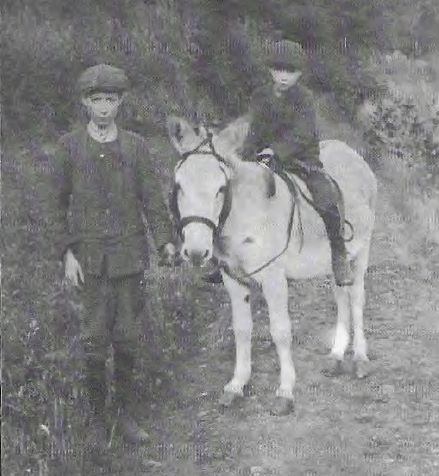
And going back to that Killegar booklet, in closing I also show from it a photo of my maternal grandmother’s two youngest brothers, William and Edmond, as young children there. Edmond was the father of the Kevin with whom I’ve been in contact about all of this. What I have yet to tell Kevin though, is that my two ancestry trees are now kind of connected, as I’ve chosen Eddie’s “official” name to be Edmond as well! So I hope he won’t mind too much, as and when I do actually tell him…




